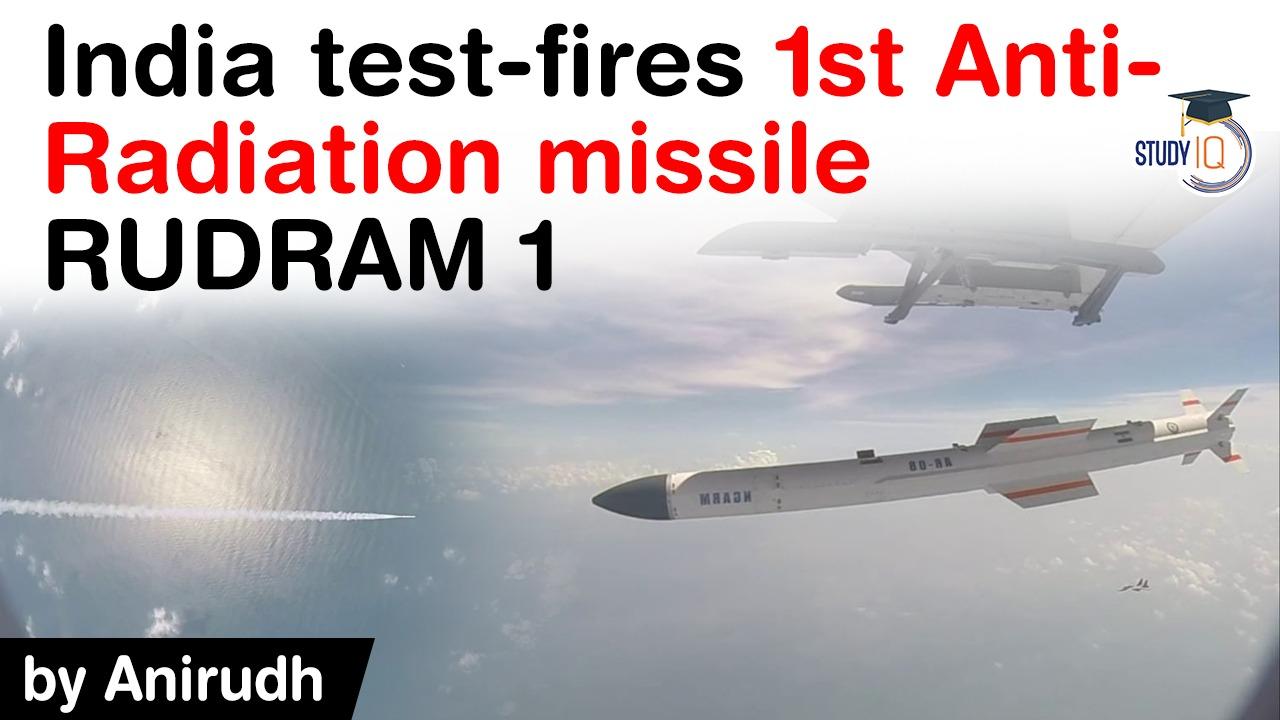Table of Contents

- Rudram 1, India’s new generation anti-radiation missile is integrated with Sukhoi-30 MKI.


WHAT IS AN ANTI-RADIATION MISSILE?
- Anti-radiation missiles are designed to detect, track and neutralise the adversary’s radar, communication assets and other radio frequency sources, which are generally part of their air defence systems.
DETECTS THROUGH RADIATION SOURCES…
- For guidance, it has a “passive homing head” — a system that can detect, classify and engage targets over a wide band of frequencies as programmed.
- Once the Rudram missile locks on the target, it is capable of striking accurately even if the radiation source switches off in between.
ABOUT RUDRAM (NEW GENERATION ANTIRADIATION MISSILE OR NGARM)
- Rudram is an air-to-surface missile, designed and developed by DRDO.
- DRDO initiated development of anti-radiation missiles of this type around eight years ago, and its integration with fighter jets has been a collaborative effort of various DRDO facilities and formations of the IAF and Hindustan Aeronautics Ltd..
- Rudram is a Sanskrit word which means “remover of sorrows”.
RANGE OF MISSILE
- Missile has an operational range of more than 100 km.
- However, its range depends on the height at which the fighter jet is flying. It can be launched from a height ranging from 500 metres to 15 km and can hit radiation emitting targets within a range of 250 km.
- Speed of Rudram is Mach 2 or twice the sound of speed.
COMPARABLE TO THE US NAVY MISSILE
- The missile is comparable to the tactical air-to-surface missile AGM88E Advanced Anti-Radiation Guided Missile that was inducted by the US Navy only in 2017 and can engage relocatable Integrated Air Defence targets and other targets equipped with shutdown capability.
WHY IS SUCH A MISSILE SIGNIFICANT?
- Rudram has been developed for the IAF’s requirement to enhance its Suppression of Enemy Air Defence (SEAD) capability. Neutralising or disrupting the operations of the adversary’s early warning radars, command and control systems, surveillance systems that use radio frequencies and give inputs for anti-aircraft weaponry, can be very crucial.
MEETS THE DEMANDS OF MODERN DAY WARFARE!!!
- Scientists said modern-day warfare is more and more network-centric, which means it comprises elaborate detection, surveillance and communication systems that are integrated with the weapons systems.
STRENGTHENING THE IAF
- In May last year, the IAF successfully test fired the aerial version of the BrahMos missile from a Su-30 MKI fighter aircraft.

Latest Burning Issues | Free PDF






















 WhatsApp
WhatsApp